At the beginning of each new year, people often make positive resolutions. Ten percent of all health club or gym members, for example, join in January. Yet a lot of the people who embark on fitness resolutions at that time struggle to stick with their new habit. By February, as many as 80 percent of resolutions fail.1

The latest book by Ted Wallace, M.S., Robert Keith Wallace, Ph.D., and Samantha Wallace
Modern medicine recognizes that the key to health is replacing bad habits with healthy ones. Most doctors will tell you to exercise more, eat better food, and get enough rest. The problem is compliance—following through and putting this advice into action.
Total Brain Coaching is a new approach whose goal is to help you develop good habits. Our number one recommendation is to incorporate the powerful super habit of the Transcendental Meditation® (TM®) technique, along with the wisdom and expertise of thousands of years of healthcare practice in Maharishi AyurVeda®. Our approach is not about trying to eliminate old, negative habits; it is about replacing them with new, positive ones—such as the TM technique.
Maharishi Mahesh Yogi, Founder of the TM program, who also revived the ancient science of Ayurveda in its completeness, gave us some very simple life advice: “Meditate and do what you know to be right.” The message here is that the first and most important step is to raise the consciousness of the doer to its most complete value. From that platform, all decisions will spontaneously reflect the highest and best interests of the individual and the environment.
The first part is easy. Practice the TM technique for 20 minutes twice a day. The second part sounds easy, but what about our ingrained bad habits? Do we have to get rid of them before we can develop our full potential and become enlightened? Or will they drop away as we get nearer to the goal?
In this article we suggest ways for you to do both by becoming your own coach.
“Meditate and do what you know to be right.” —Maharishi Mahesh Yogi
Become Your Own Coach with a Holistic System of Coaching
There are many systems of coaching available today. Total Brain Coaching is unique in that it allows people to use the power of consciousness to create new beneficial habits. It may be used by individuals, teams, or organizations. In this article we show how you can apply its principles and become your own coach.
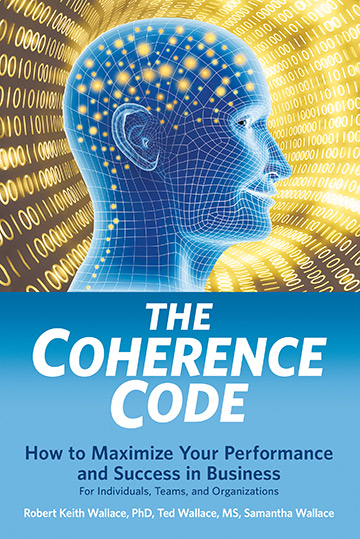
The companion book to Total Brain Coaching
We developed this system with our oldest son, Ted Wallace, M.S., who is a Registered Corporate Coach (R.C.C.). The three of us recently published two companion books on changing your habits
The Coherence Code: How to Maximize Your Performance and Success in Business, is a how-to business fable. It tells the true story of how a large U.S. sporting equipment company on the brink of failure is saved by Total Brain Coaching.2
Total Brain Coaching, is an instructional manual for individuals and coaches. It offers specific guidelines for creating more effective and holistic habit change.3
You can also take the course “Total Brain Coaching: How to Change Your Habits to Live a Healthy, Happy, Enlightened Life” in person, April 5–26, 2020, at Maharishi International University (MIU), Fairfield, Iowa. It will also be streamed live or on-demand.
Habits and Neural Circuits
What are habits anyway? From the standpoint of neurophysiology, we can think of a habit as a type of neural circuit that has been reinforced many times over. A habit is not merely a simple pathway but more of a superhighway in your brain along which information flows unimpeded.
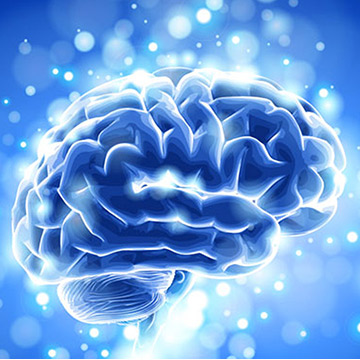
A habit is a neural circuit in the brain
Enormous energy has been expended over the years to make this neural superhighway a fast, efficient route. Some of our strongest habits began when we were young and continue to influence our thinking and behavior throughout our lives. Trying to break an old habit means that you are attempting to dismantle a superhighway, which is no easy task.
In The Power of Habit: Why We Do What We Do in Life and Business, Charles Duhigg outlines the three main components of a habit: cue, routine, and reward.4 According to Duhigg, the Golden Rule of changing a habit is to keep the same cue and reward but change the routine.
One of the primary approaches of Alcoholics Anonymous (AA), for example, is to substitute the negative routine of drinking with the positive routine of going to AA meetings. These provide psychological rewards, such as companionship, shared emotions, and catharsis.
This approach for changing habits has been used by other organizations as well, and while it can be successful, bad habits and addictions require a great deal of time and work to change.
In order to build and strengthen a new and more beneficial habit, you can either substitute a new routine, or adopt a completely new habit.
A simple habit takes a relatively short time to change. One study on simple habits showed that it took 20 days to establish the habit of drinking a glass of water at the beginning of the day, and 84 days to establish the habit of doing 50 sit-ups every day.5
More difficult habits—the ones we really want to change—take substantially longer. Each situation is different and depends on what works best for you.
One approach that can help everyone is the adoption of a super habit.
A habit is not merely a simple pathway but more of a superhighway in your brain along which information flows unimpeded.
Super Habits
Establishing a “keystone habit” can help change a variety of other habits, writes Duhigg.
He tells the story of Lisa Allen, a 34-year-old woman who was in the middle of a difficult divorce. Since the age of 16, Lisa had harmful smoking and drinking habits. To experience some relief from her problems, she vacationed in Cairo that year. Although she was unhappy about her marriage and worried about being in debt, out of nowhere, she decided to return to Egypt the following year to trek in the desert.

Practicing the TM technique twice a day is a Super Habit
In order to achieve this physically demanding goal, Lisa realized she had to quit smoking. As Duhigg explains, a single habit change can act as a keystone habit. Once Lisa stopped smoking, she was able to give up other bad habits and create new positive ones, which dramatically improved her physical and mental health.
There are many examples of keystone habits, such as doing yoga, running marathons, or studying art or music.
Practicing the Transcendental Meditation technique is arguably the most powerful keystone habit—we call it a super habit. We’ll explain why in a moment.
When you learn the TM technique, nobody refers to it as a “super habit.” To practice TM, you don’t have to change your diet, do more exercise, or make any other lifestyle changes. All you have to do is meditate twice a day, morning and evening.
Practicing the Transcendental Meditation technique is arguably the most powerful keystone habit—we call it a super habit.
Increased EEG Coherence
Volumes of scientific research show that practicing the single super habit of TM twice a day leads to huge improvements in many areas of life, from decreased blood pressure to increased creativity.6 For easy ways to help you make your TM practice part of your daily routine, see the Enjoy TM News article “20 Tips for TM Twice a Day.”
How does just one practice accomplish so much? A primary reason is that the TM technique creates greater orderliness or integration in the brain. We consider this increase in brain coherence to be the result of the formation of new neural networks. This is shown by increased EEG coherence during TM practice, or brainwave synchrony revealed by electroencephalogram (EEG).7,8
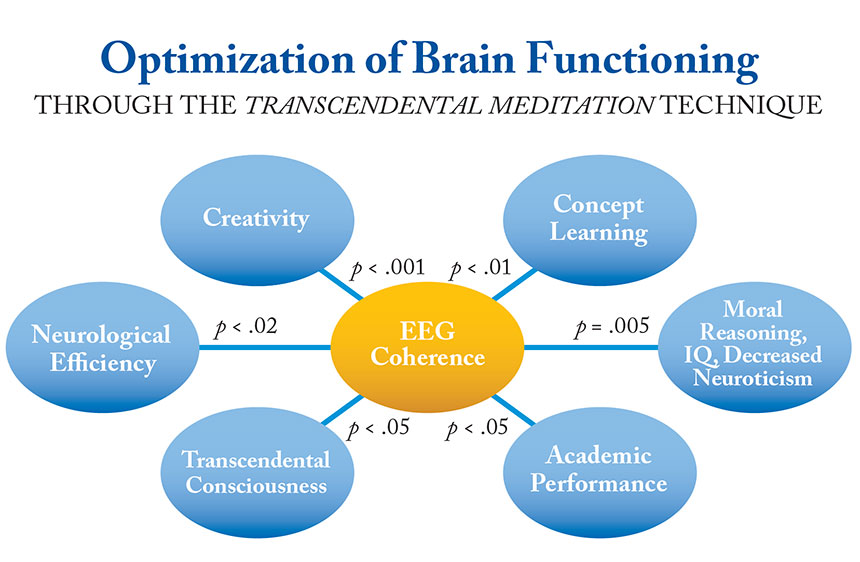
Correlates of EEG coherence. Note: The p-value is the probability that the observed relationship occurred by chance; the smaller the p-value, the stronger the association.
Many studies point to the TM technique as a super habit affecting all areas of physical and mental health.
A recent study, supported by the National Institutes of Health, showed that subjects practicing the Transcendental Meditation technique had a 48 percent reduction in risk for heart attack, strokes, and death, as compared to controls.9 Any pill that achieved such results would be hailed as the medication of the century!
Another study, supported by the U.S. Department of Defense, showed clearly that the TM technique is highly effective in helping soldiers with post-traumatic stress syndrome, or PTSD.10 Again, this is an enormous breakthrough.
And in research directly relevant to habit change, the TM program has been clinically recognized in the spontaneous reduction of smoking, alcohol consumption, and non-prescription drug abuse.11
Volumes of scientific research show that practicing the single super habit of TM twice a day leads to huge improvements in many areas of life, from decreased blood pressure to increased creativity.
The Neurophysiology of Transformation
If habits are superhighways in the brain, the longer a habit continues, the stronger and more powerful that highway becomes and the more difficult it is to change.
Yet new highways are constantly being formed. Every time you learn a new skill or have a new experience, your brain changes in a process called neuroplasticity. The extraordinary gift of neuroplasticity is the ability of the brain to change—often repairing itself—at any time in life.
The manner in which the brain is spontaneously changed by experience may be as simple as the addition of a few molecules to a nerve membrane, or as complex as the formation of an entirely new neural network.

Measuring synchronized brainwave EEG activity during the TM practice
Brain development is a prime example of nature versus nurture. The forces of nature and nurture shape all of our behavior and habits.
Our DNA is programmed to lay down certain basic pathways, and for our entire lives our environment has a huge effect on the modification of these pathways. For example, we are born with the natural ability to transcend, experience Transcendental Consciousness, and grow to enlightenment. But unless we learn the TM technique, that innate ability happens only by chance, if at all.
One of the many advantages of the simple, effortless TM technique is that it can be learned by anyone, at any age from 10 on, regardless of a person’s background or belief system. When we develop the super habit of regularly sitting twice a day to practice TM, our growth accelerates in all areas of our lives.
This growth results from the state of restful alertness we experience during TM practice, which allows our physiology to dissolve stress. When we transcend, we gradually experience finer and finer states of a thought until we reach the source of thought, a state of pure consciousness. This is a unique, fourth state of consciousness that is distinct from waking, dreaming, or sleeping.12
Research shows that TM meditators who experience this state on a regular basis, twice a day, are better able to adapt to stressful situations than non-meditating controls.13 The TM technique “rewires” your brain so that you naturally develop more powerful integrative neural networks that support higher states of consciousness. (See Dr. David Orme-Johnson’s article, “What Is Cosmic Consciousness?”) This enables you to function with greater neuroplasticity and more easily change your habits.
Practicing the super habit of the TM technique helps you spontaneously change bad habits by releasing stress from your nervous system and increasing the neuroplasticity of your brain. But does practicing TM eliminate all of our bad habits?
The extraordinary gift of neuroplasticity is the ability of the brain to change—often repairing itself—at any time in life.
The Role of Maharishi AyurVeda
The deep rest gained during TM practice allows the self-healing mechanisms of the body to work, resulting in numerous physical and mental health benefits. To help remove long-standing stresses in our physiology, Maharishi recognized that additional programs were needed.

Maharishi explained that the TM technique works on the finest level of consciousness. In order to enhance and accelerate the elimination of deep-rooted stress through physical means as well, he revived Ayurveda, the ancient natural system of health in India.
Maharishi AyurVeda® (MAV) includes the TM technique and all the other programs for human development founded by Maharishi.14 It makes specific recommendations for diet and lifestyle and uses powerful purification techniques such as Panchakarma. (For more information, see “Discover the Maharishi AyurVeda Approach to Cleansing and Detox.”)
To apply Total Brain Coaching in your own life, regularly practice the TM technique as your super habit, and use Maharishi AyurVeda to help you more easily adopt new lifestyle habits.
To enhance and accelerate the elimination of deep-rooted stress through physical means as well, Maharishi revived Ayurveda, the ancient natural system of health in India.
The Importance of Energy States
The first step in using Maharishi AyurVeda in Total Brain Coaching is to know your Energy State. This makes it easier to maintain positive habits. In our books, we use the term “Energy State” from physics to correspond to the time-tested Ayurvedic mind-body assessments called Prakriti and Vrikriti.
Prakriti refers to a person’s basic nature and Vrikriti to any imbalances that might be present. In Ayurveda, the three main tendencies of Prakriti—the Doshas—are known as Vata, Pitta, and Kapha (which we’ll explain in a moment). A growing body of scientific research reveals a correlation between these three Doshas or Energy States and distinct genetic, biochemical, and physiological markers.15

Vata, Pitta, and Kapha are the three Doshas or tendencies of Prakriti in Ayurveda, which correspond to the V, P, and K Energy States in Total Brain Coaching
Ayurveda determines how different factors influence everyone’s Doshas, either positively or negatively. One of the simplest but most important factors, for example, is diet, which can create either balance or imbalance.
Modern science is discovering how different foods turn genes on or off. There is an entire field called nutrigenomics, which is devoted to how foods change gene expression. Ayurveda, which has known the effect of food on our mind and body for centuries, considers food to be medicine. Each of us is different and we react differently to environmental factors such as food, temperature, exercise, and sleep.
Once you know your individual Dosha or Energy State, it is easier to determine what environmental triggers cause you to go out of balance, such as heat or cold or windy days. This understanding makes it easier to sustain your positive habits.
Ayurveda, which has known the effect of food on our mind and body for centuries, considers food to be medicine.
What’s Your Energy State?
There are a number of ways to assess your Energy State. The simplest is to take a self-assessment quiz, which you can find in The Coherence Code and Total Brain Coaching. We also recommend that you consult with a trained Maharishi AyurVeda coach for a thorough assessment of your Prakriti and Vrikriti that is tailored to your needs.
Total Brain Coaching suggests various strategies for habit change using the principles of Maharishi AyurVeda. Some may be used by everyone, while others are tailored for a person’s particular Energy State.

If you have a P (Pitta dominant) Energy State you have strong will power and discipline
For example, if you have a P Energy State (P stands for an energy state dominated by Pitta), you have strong will power and good discipline, so it is easier for you to adopt a new habit. Not surprisingly, most books on habit change are written by P Energy State people for P Energy State people!
If you have a K (Kapha dominant) Energy State, it will probably take longer for you to make a habit change. But once you do, it will be easier for you to stick to it.
If you have a V (Vata dominant) Energy State, on the other hand, not only can you change a habit quickly, you may even want to make two or three habit changes at the same time. However, maintaining even one habit change may be hard because it is the nature of your V Energy State to move rapidly from one topic to another.
Total Brain Coaching encourages people to balance their Energy State before attempting to change a habit. Habit change requires energy, and if you are out of balance and lack energy, it will be harder to adopt a new beneficial habit.
Habit change requires energy, and if you are out of balance and lack energy, it will be harder to adopt a new beneficial habit.
Empower Yourself with Self-Coaching
In addition to practicing the super habit of the TM technique and getting guidance from a Maharishi AyurVeda expert, another effective way to change your habits is to use the tool of self-coaching.

Self-coach with a journal or habit-change app
Coaching ourselves is something many of us do, even if we don’t call it that. For example, keeping a journal or using a habit-change app are excellent forms of self-coaching.
A journal is valuable for tracking your progress and integrating what you’re learning along the way. You can discover for yourself what is working and what is not. This helps you fine-tune your goals and strategies as you go.
Another powerful tool you can use is self-pulse diagnosis. Maharishi International University offers instruction in this ancient art of Ayurveda through its online enrichment program: Maharishi Self-Pulse Reading 16-Lesson Course with Paul Morehead, Ph.D.
Using something we call “environmental coaching” is also effective in establishing new habits. This helps you identify the triggers in your environment that are affecting your ability to make changes, such as bringing home high-carb snacks while you are on a diet.
You can also empower yourself by celebrating your milestones and using “the progress principle.”
A journal is valuable for tracking your progress and integrating what you’re learning along the way. You can discover for yourself what is working and what is not.
“The Progress Principle”
Total Brain Coaching is a process of continuous improvement and integration. By moving ahead at your own best pace and feeling empowered to take responsibility for your habit change, your progress becomes self-motivated.

Harvard researchers found that happiness and positive emotions were the most powerful motivators for progress
Researchers at Harvard examined what it is that motivates workers to produce the greatest creative output. They studied 238 people from seven companies and analyzed 12,000 diary entries to determine the key factors involved.
They discovered that the old motivators of fear and pressure were not associated with higher performance. Happiness and positive emotions were!
The researchers called their findings “the progress principle.” Any type of progress that the workers experienced, either as individuals or a team, resulted in what they called a “best day” performance. Progress was also associated with positive emotions. The achievement of any sort of meaningful progress on one day reliably led to a positive experience, which resulted in increased performance the following day.16
Total Brain Coaching emphasizes the importance of positive feedback for each step of progress. Motivation really is everything! If your motivation comes from within, the chances are far better that you will follow through with your habit-change plan and achieve your goals.
Harvard researchers discovered that the old motivators of fear and pressure were not associated with higher performance. Happiness and positive emotions were!
Celebrate Milestones to Engage the Dopamine Feedback Loop
Celebrating milestones as part of the process of establishing healthy habits reinforces a positive feedback loop, which is controlled by dopamine.

Use the dopamine feedback loop to reinforce positive change
Dopamine is a neurotransmitter involved in all types of behavior, including motivation. Dopamine used to be thought of as the “pleasure” chemical of the brain, but now it is associated with the anticipation or craving of pleasure. It causes you to seek experiences that you believe will make you happy.
Many psychologists suggest that dopamine lies at the basis of all addictions, from drugs to social media. Every time you post a selfie or play a video game, you are feeding the dopamine circuit in your brain but never fully satisfying it. Dopamine is about anticipating reward. When you encounter a habit cue or trigger, it causes you to anticipate a reward of some kind and your dopamine begins to flow.
The dopamine feedback loop is a physiological cycle that can be either good or bad for you. If the cycle causes you to become addicted to something harmful like smoking, obviously it can hurt your health. If it provides motivation to maintain a good habit, such as regular exercise, then it will help improve your health.
Celebrating your milestones in creating new habits activates a positive dopamine feedback loop, which in turn increases your motivation and self-confidence. The most powerful motivation of all comes from the experience of energy and bliss within, through regular practice of the TM technique. Each dip into that state of restful alertness brings us out fresh and ready to enjoy our day in steps of progress and fulfillment.
The most powerful motivation of all is the experience of energy and bliss within, which comes with regular practice of the TM technique.
More about Total Brain Coaching and Its Creators
Total Brain Coaching uses four different coaching approaches: Self-Coaching, Personal Coaching, Group Coaching, and Environmental Coaching; this article focussed on becoming your own coach. For more about each type of coaching, visit totalbraincoaching.com. A professional Total Brain Coach can guide clients in determining what new habits they want to adopt and provide feedback and motivation to help them reach their goals.

Robert Keith Wallace, Ph.D.
Robert Keith Wallace, Ph.D., did pioneering research on the Transcendental Meditation technique. His seminal papers on a fourth major state of consciousness were published in Science, American Journal of Physiology, and Scientific American and supported a new paradigm of mind-body medicine and total brain development. He has written a number of books, most recently The Coherence Code and Total Brain Coaching, co-authored with Ted Wallace, M.S., and Samantha Wallace.
Dr. Wallace was the founding President of Maharishi International University (MIU) and is currently a Trustee of MIU and Chairman of the Department of Physiology and Health. He has traveled the world giving lectures at major universities and institutes on Consciousness-Based health programs.
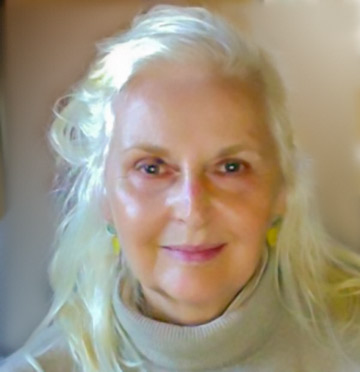
Samantha Wallace
Samantha Wallace is a writer, the creator of rare artisanal essential oil perfumes, and a painter. She has a deep understanding of Maharishi AyurVeda and its relationship to health and well-being. With Dr. Wallace she is co-author of Gut Crisis and The Rest and Repair Diet, which integrate ancient Ayurvedic wisdom with the latest findings in modern medicine, among other books.
Her latest book will be released this summer: Beauty and Being Yourself: A Friendly Introduction to Ayurveda and Essential Oil Skincare, co-authored with Dr. Wallace and Veronica Wells Butler, M.D. This book draws on her modeling career, when she was featured on the covers of Vogue, Cosmopolitan, and Look magazines.
Happily married for over 40 years, Keith and Samantha Wallace have a combined family of four children and six grandchildren.

Ted Wallace, M.S.
Ted Wallace, M.S. is currently an Agile Coach at Cambridge Investment Research. He has completed Master of Science degrees in Computer Science and Physiology and is a certified ScrumMaster Professional (CSM, CSPO, CSP) and a registered corporate coach (RCC) with thousands hours of coaching sessions completed.
He co-authored The Coherence Code and Total Brain Coaching with his father and mother, Dr. Robert Keith Wallace and Samantha Wallace. Ted was fortunate to spend a number of years under Maharishi’s direct guidance and was involved projects such as running Maharishi Ayurveda Products International and developing computer programs for different parts of the TM organization. He and his wife Danielle have three children.
Notes
1. Alexandra Black Larcom. “5 Factors That Help People Stick to a New Exercise Habit.” health.gov, 2018, https://health.gov/news/blog-bayw/2018/01/5-factors-help-people-stick-new-exercise-habit/
2. Robert Keith Wallace, Ph.D., Ted Wallace, M.S., and Samantha Wallace. The Coherence Code: How to Maximize Your Performance and Success in Business, for Individuals, Teams, and Organizations (Fairfield, IA: Dharma Publications, 2020).
3. Robert Keith Wallace, Ph.D., Ted Wallace, M.S., and Samantha Wallace. Total Brain Coaching: A Holistic System of Effective Habit Change for the Individual, Team, and Organization (Fairfield, IA: Dharma Publications, 2020).
4. Charles Duhigg. The Power of Habit: Why We Do What We Do in Life and Business (New York, NY: Random House, 2012).
5. Jeremy Dean. Making Habits, Breaking Habits (Boston, MA: Da Capo Lifelong Books, 2013).
6. Robert Keith Wallace, Ph.D., and Lincoln A. Norton. An Introduction to Transcendental Meditation: Improve Your Brain Functioning, Create Ideal Health, and Gain Enlightenment (Fairfield, IA: Dharma Publications, 2016).
7. F.T. Travis, and J. Shear. “Focused Attention, Open Monitoring, and Automatic Self-Transcending: Categories to Organize Meditations from Vedic, Buddhist, and Chinese traditions.” Consciousness and Cognition 19(4):1110–18, 2010.
8. D.W. Orme-Johnson and C.T. Haynes, “EEG Phase Coherence, Pure Consciousness, Creativity and TM-Sidhi Experiences,” International Journal of Neuroscience 1981;13:211-7.
9. R.H. Schneider, et al. “Stress Reduction in the Secondary Prevention of Cardiovascular Disease: Randomized, Controlled Trial of Transcendental Meditation and Health Education in Blacks.” Circulation: Cardiovascular Quality and Outcomes 5:750–58, 2012.
10. S. Nidich, et al. “Non-Trauma-Focused Meditation versus Exposure Therapy in Veterans with Post-Traumatic Stress Disorder: A Randomised Controlled Trial.” Lancet Psychiatry 5(12):975–86, 2018.
11. C.N. Alexander, et al. “Treating and Preventing Alcohol, Nicotine, and Drug Abuse through Transcendental Meditation: A Review and Statistical Meta-Analysis.” Alcoholism Treatment Quarterly 11:13–87, 1994.
12. R.K. Wallace, et al. “A Wakeful Hypometabolic Physiologic State.” American Journal of Physiology 221(3): 795–99, 1971.
13. D.W. Orme-Johnson. “Autonomic Stability and Transcendental Meditation.” Psychosomatic Medicine 35(4):341–49, 1973.
14. Robert Keith Wallace. Maharishi Ayurveda and Vedic Technology: Creating Ideal Health for the Individual and the World (Fairfield, IA: Dharma Publications, 2016). Adapted and updated from The Physiology of Consciousness by R.K. Wallace (1995).
15. S. Dey, and P. Pahwa. “Prakriti and Its Associations with Metabolism, Chronic Diseases, and Genotypes: Possibilities of New-Born Screening and a Lifetime of Personalized Prevention.” Journal of Ayurveda Integrative Medicine 5:15‑24, 2014.
16. Teresa M. Amabile, and Steven J. Kramer. The Progress Principle: Using Small Wins to Ignite Joy, Engagement, and Creativity at Work (Boston, MA: Harvard Business Review Press, 2011).

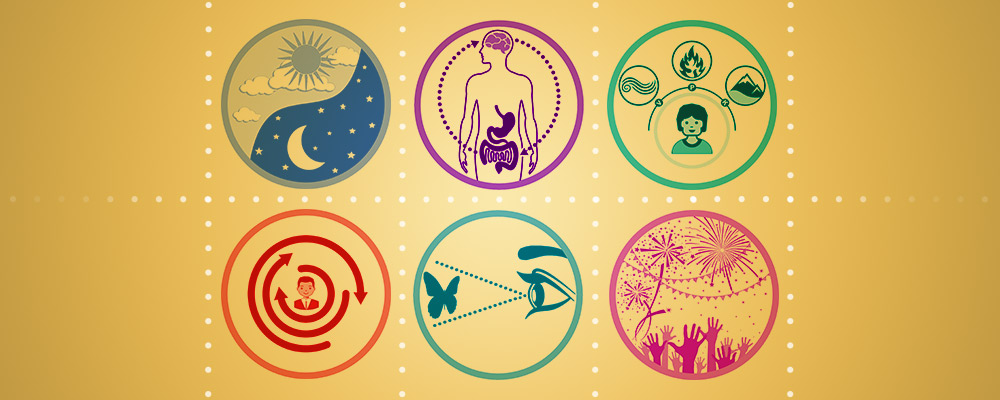
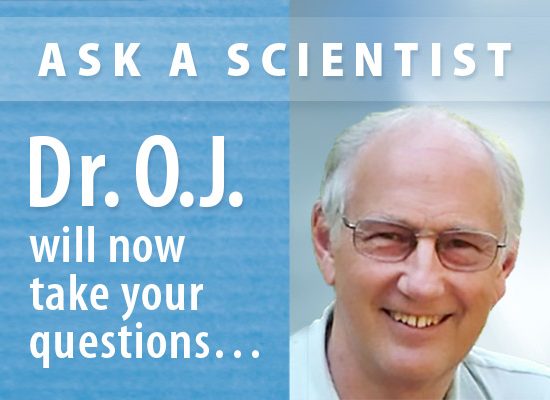
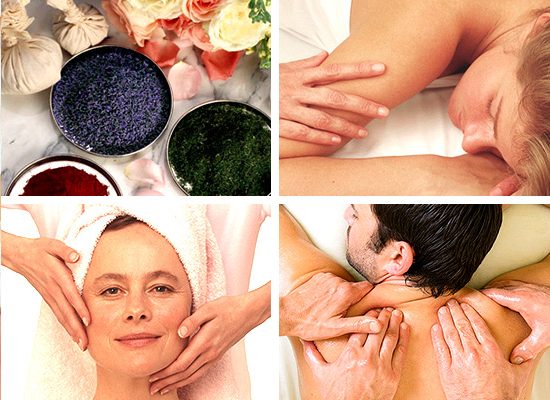
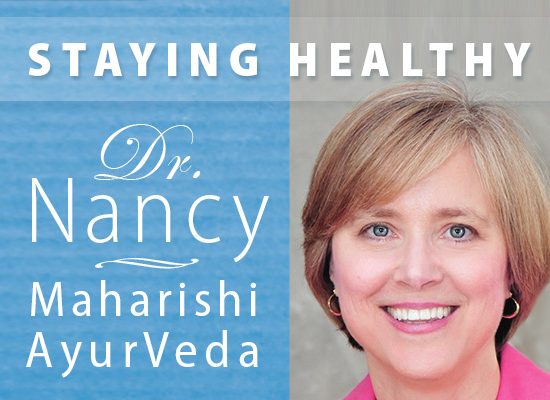
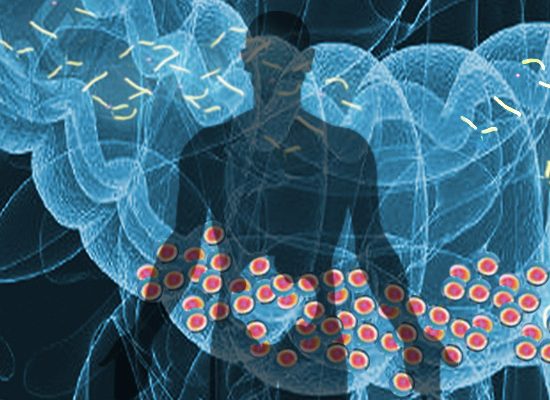
Great article, team.
And congratulations on your new books.